Is Email Marketing Dead? Not if You Keep Up With These Best Practices
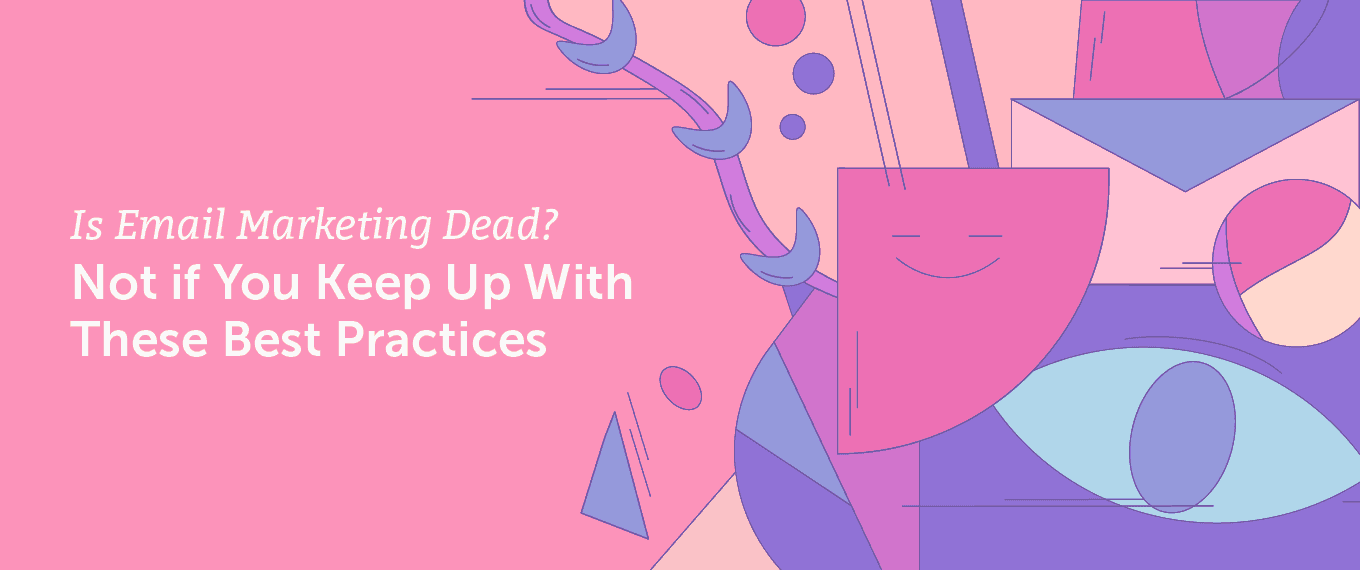 The digital marketing landscape is constantly shifting, so it’s easy to see why some people are asking, “Is email marketing dead?”
Well, Statista predicts that the number of global email users will grow from 3.9 billion in 2019 to 4.48 billion in 2024. That means over half of the world’s population will be using email, so it’s clearly not a channel that can be ignored in 2021 and beyond.
The question becomes, “How do you make the best of using email marketing in your strategy?”
Keep reading to learn:
The digital marketing landscape is constantly shifting, so it’s easy to see why some people are asking, “Is email marketing dead?”
Well, Statista predicts that the number of global email users will grow from 3.9 billion in 2019 to 4.48 billion in 2024. That means over half of the world’s population will be using email, so it’s clearly not a channel that can be ignored in 2021 and beyond.
The question becomes, “How do you make the best of using email marketing in your strategy?”
Keep reading to learn:
- What not to do with your email marketing strategy.
- Best email marketing practices for 2021 and beyond.
Is email marketing dead? Not if you keep up with these best practices.
Click To TweetStart With Your Own Email Marketing Calendar Template
A great way to begin your new email marketing strategy journey is with a calendar template that will help you perfect your planning. Download yours today, so you start off on the right foot.Email Marketing is Still Relevant
Although email marketing is one of the older channels in the digital marketing space, it’s still alive and well. With 3.9 billion users worldwide, email is one of the best ways to reach potential customers. Not to mention that 58% of U.S. consumers check email first thing in the morning. That’s a significant number of people you can reach.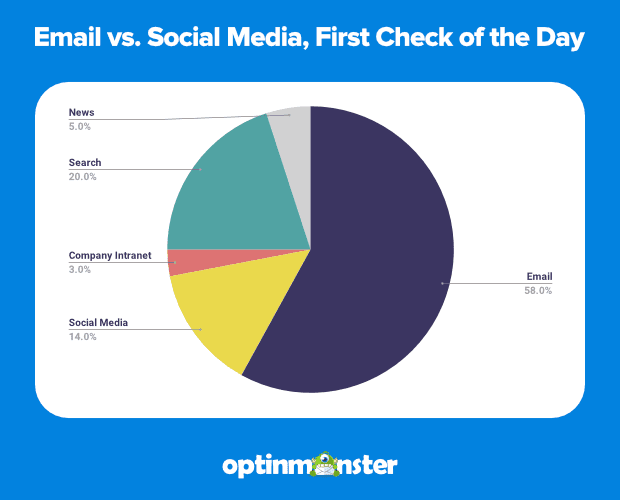 OptinMonster
More people check their email than social media first thing in the morning. Furthermore, despite the rise of new social media platforms, 73% of millennials prefer to receive business communications via email. That being said, giving up on email marketing would be missing a significant business opportunity.
OptinMonster
More people check their email than social media first thing in the morning. Furthermore, despite the rise of new social media platforms, 73% of millennials prefer to receive business communications via email. That being said, giving up on email marketing would be missing a significant business opportunity.
Email Marketing ROI
Email marketing statistics show that email generates $38 for every $1 spent (a 3800% return on investment). Although it is a paid marketing channel, it’s one of the most cost-effective options. Email marketing campaigns are especially effective when compared to social media marketing. A whopping 60% of consumers have purchased a product after receiving a promotional email. Compare this to the 12.5% of consumers that would consider making a purchase based on a promotional social media message. Why is the email marketing ROI so much higher? It all boils down to consumer expectations. Consumers expect promotional emails, so they go to their email to find discounts and deals. On social media platforms, customers expect more content and entertainment. They’re not there for brand promotion, so it’s no surprise that B2B and B2C marketers plan to increase their investment in email marketing.Consumers expect promo emails, so they go to their email to find discounts and deals.
Click To TweetWhat Poor Email Marketing Practices Really Need to Go?
Email marketing isn’t dead, but spammy email marketing practices are. Using poor email etiquette results in losing customers and being flagged as a spam sender. Make sure you avoid the following ineffective (and potentially ill-mannered) email marketing tactics:
1. Failing to Follow GDPR Guidelines
The EU’s General Data Protection Regulation (GDPR) guidelines are the strictest privacy protection rules around. The GDPR aims to protect consumer privacy and data online. If you sell to consumers in EU countries, the rules apply to you — even if your business is located in the United States. The GDPR has two primary regulations for email marketing:- The individual you are emailing must provide consent to receive your emails.
- The individual is an existing customer who has made a purchase, OR the individual has been provided an easy way to opt-out of your email communications.
 Following these best practices not only helps you avoid large fines but also helps you build trust and goodwill with your subscribers.
Ultimately, you want to demonstrate that you respect your customers' privacy.
Following these best practices not only helps you avoid large fines but also helps you build trust and goodwill with your subscribers.
Ultimately, you want to demonstrate that you respect your customers' privacy.
2. Impersonal Subject Lines and Content
Personalization in an email is nothing new, and since it is widely used by most businesses, customers have come to expect it. Your customers want to feel they are known, understood, and appreciated. Failing to do so will result in poor results from your email campaigns. Adding the first name to your email subject line can boost open rates by up to 20%. Personalization also reduces unsubscribe rates and the number of spam reports. If you’re not personalizing emails, you’re not getting the most out of this marketing channel.3. Not Mobile-Friendly
Mobile opens make up 46% of all email opens. If your emails aren’t formatted for mobile devices, you’ll turn off a significant portion of your subscribers. In June 2018, Litmus reported 46% of all email opens were accounted for by mobile users.
You only have a few seconds to capture your readers’ attention, if your email takes longer than that to load, you’ve lost an opportunity.
Consumers are constantly on the go, and they expect businesses to provide fast and pleasant mobile experiences — including websites and email.
In June 2018, Litmus reported 46% of all email opens were accounted for by mobile users.
You only have a few seconds to capture your readers’ attention, if your email takes longer than that to load, you’ve lost an opportunity.
Consumers are constantly on the go, and they expect businesses to provide fast and pleasant mobile experiences — including websites and email.
4. Unappealing Visual Design
As consumers, we are highly influenced by visuals and design. As an illustration, 94% of consumers will leave a website that has a poor graphic design. Imagine how many will ignore an email that isn’t visually appealing. Content marketing consists of more than written content. Low-resolution graphics and haphazard layouts quickly confuse and even turn off customers. Unfortunately, there are many other companies out there sending visually appealing emails, so you can’t afford to skimp on design and imagery if you’re going to invest in email.You can’t afford to skimp on design and imagery if you’re going to invest in email.
Click To Tweet5. Not Acting on Email Performance Metrics
Like any marketing channel, email has certain benchmarks and best practices, but at the end of the day, your customers and subscribers are your final judge. Every time you send an email campaign, you have an opportunity to learn about your customers’ preferences. Your email performance metrics allow you to monitor customer engagement and retention. However, your data can’t benefit you if you don’t use it. Study your metrics to find out what works for you and what doesn’t. As you make changes, you can continue to pinpoint the finer details of your best tactics. A/B testing is an essential part of your email strategy. You can use it to test subject lines, email content, imagery, and calls-to-action.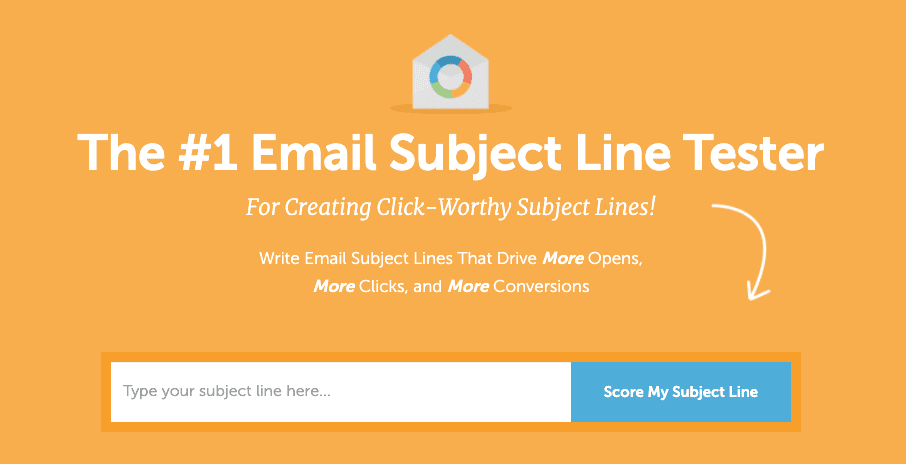 CoSchedule
Without studying your data or performing comparative tests, your email marketing results will hit a ceiling, and you won’t be able to grow with your customers.
CoSchedule
Without studying your data or performing comparative tests, your email marketing results will hit a ceiling, and you won’t be able to grow with your customers.
Email Marketing Best Practices You Need to Master
Since we’re talking about what NOT to do with email marketing, let’s also walk through what you SHOULD be doing with your email marketing strategy.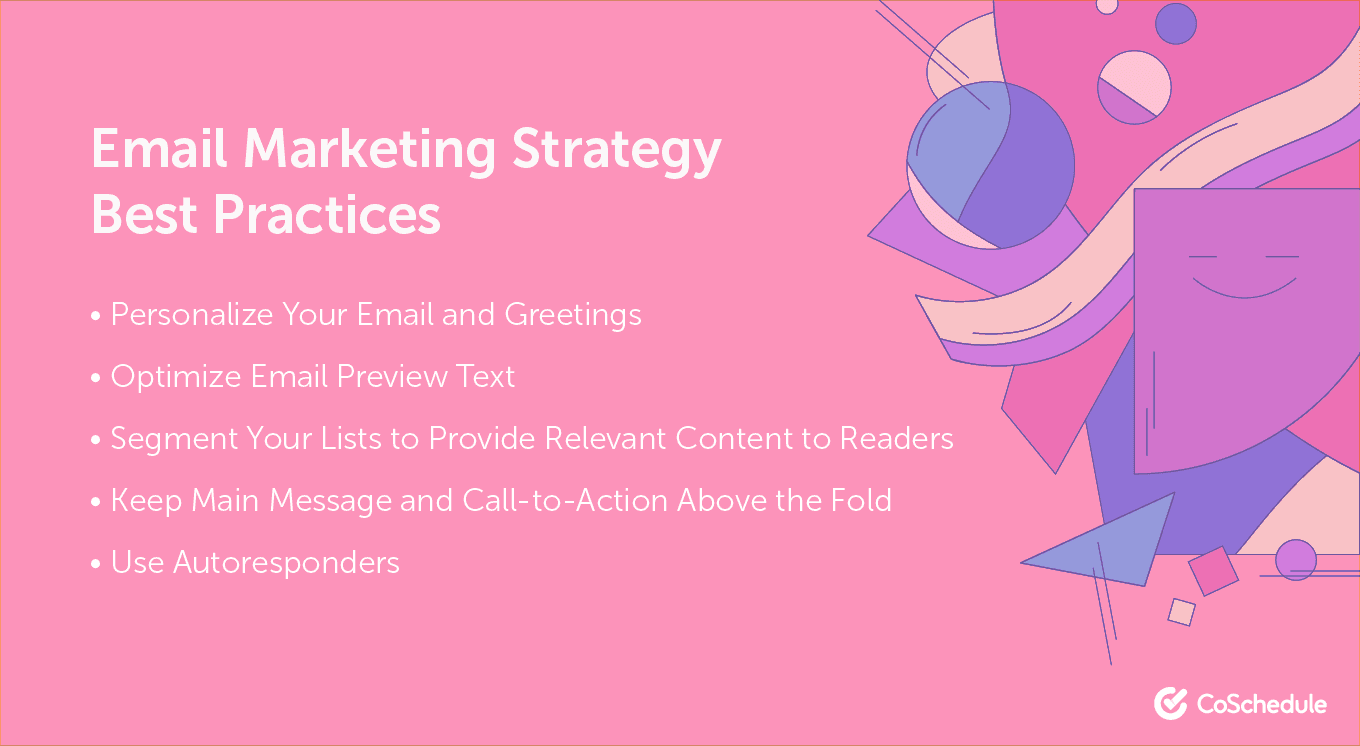
1. Personalize Your Email and Greetings
When compared to non-personalized emails, personalized messages result in 29% higher unique open rates and 41% higher unique click-through rates. Personalization is not a nice-to-have; it’s a customer expectation. There are several ways to add personalization to an email. You can start by simply personalizing subject lines and greetings to include your customer’s name. If you want to go further, softwares, like MailChimp and HubSpot, offer smart personalization features to further tailor your email content. Smart content allows you to personalize greetings, calls-to-action, and text based on the customer lifecycle stage, referral source, and more. For example, imagine you’re promoting a webinar, and you want to share it with your email list — which includes both people who have attended one of your webinars in the past and those who haven’t. A good email marketing software will let you create two different subject lines that are tailored to each group: When it comes to email, the more personal your communication, the better your conversion rate.
When it comes to email, the more personal your communication, the better your conversion rate.
2. Optimize Email Preview Text
In an email inbox, your customer can see the subject of your email and a preview of its content. The preview, also known as preview text, is pulled from your email content by default. HubSpot
However, if you want to increase open rates, we recommend that you customize this text. The default text can look messy, and it may not get your message across effectively. Ideally, your preview should be short and to the point (50 characters or less).
Summarize the content of your email and make sure to put your best foot forward. If you’re offering a discount, mention it in your preview. Your preview text should stand out in a crowded inbox and entice readers to open your email.
HubSpot
However, if you want to increase open rates, we recommend that you customize this text. The default text can look messy, and it may not get your message across effectively. Ideally, your preview should be short and to the point (50 characters or less).
Summarize the content of your email and make sure to put your best foot forward. If you’re offering a discount, mention it in your preview. Your preview text should stand out in a crowded inbox and entice readers to open your email.
If you’re offering a discount, mention it in your email preview.
Click To Tweet3. Segment Your Lists to Provide Relevant Content to Readers
Your customers are not all the same, so why would you send them all the same emails? Learning to segment your email lists can result in a 760% increase in email-driven revenue. It may take some time and experimentation to find meaningful segments, but it’s worth it.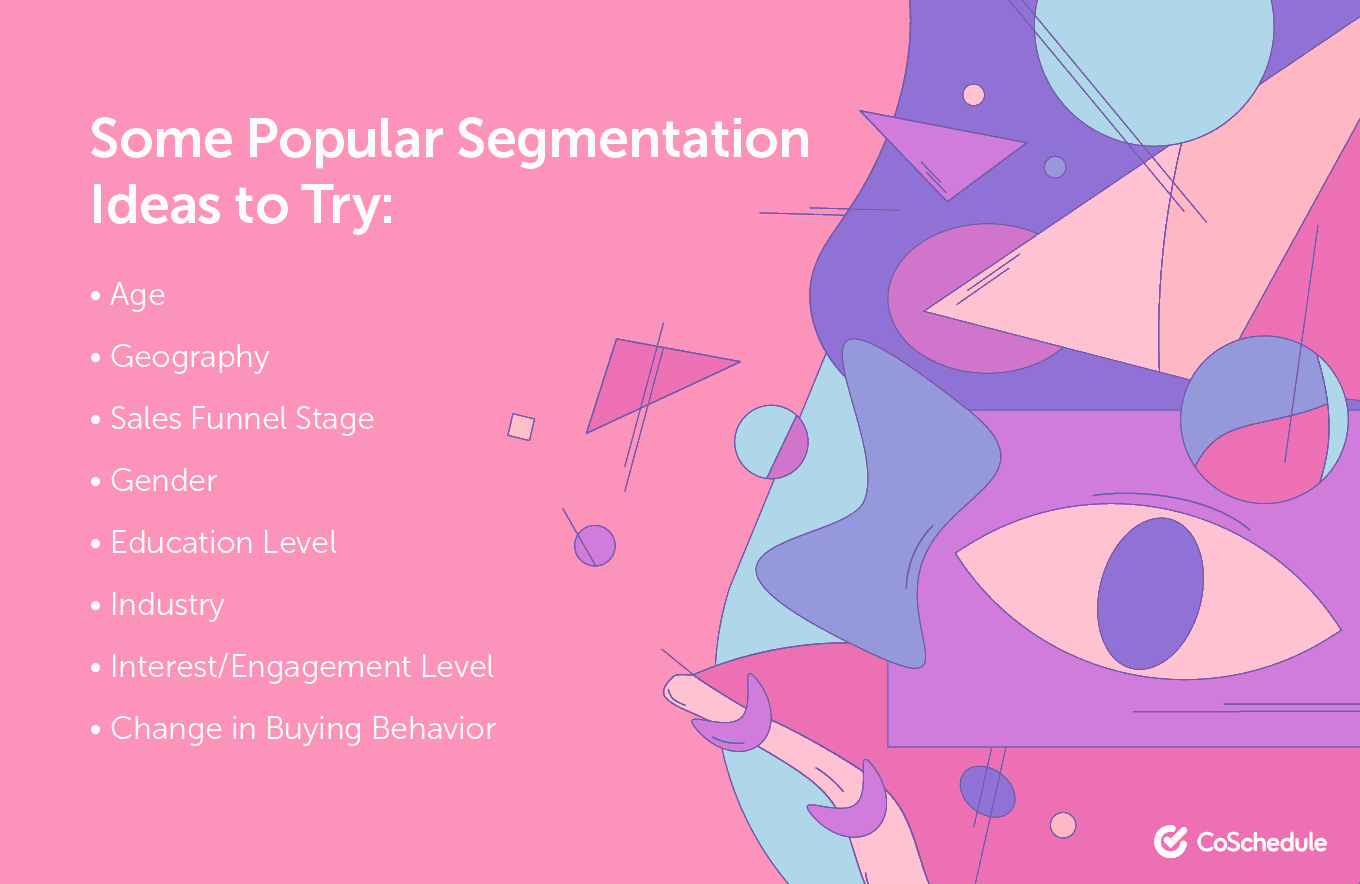 It turns out your buyer persona is made up of several segments.
Using a combination of demographic and behavioral cues to create your segments allows you to tailor your content for better reader engagement and click rates.
Most email marketing tools will let you create tags that you can assign to specific contacts in your database, which will allow you to create such segments within your email list.
If you’re using HubSpot for your email marketing, you can use personas and lists to create segments and assign them to different workflows. Creating workflow automation for each segment ensures that each reader gets the right content at the right time.
It turns out your buyer persona is made up of several segments.
Using a combination of demographic and behavioral cues to create your segments allows you to tailor your content for better reader engagement and click rates.
Most email marketing tools will let you create tags that you can assign to specific contacts in your database, which will allow you to create such segments within your email list.
If you’re using HubSpot for your email marketing, you can use personas and lists to create segments and assign them to different workflows. Creating workflow automation for each segment ensures that each reader gets the right content at the right time.
 Create persona profiles to segment your email list and automation workflows with HubSpot.
Create persona profiles to segment your email list and automation workflows with HubSpot.
4. Keep Main Message and Call-to-Action Above the Fold
Readers spend an average of 11 seconds focusing on email content. That’s not a lot of time to get your message across. If you want your email newsletter to have a high ROI, then keep the good stuff above the fold.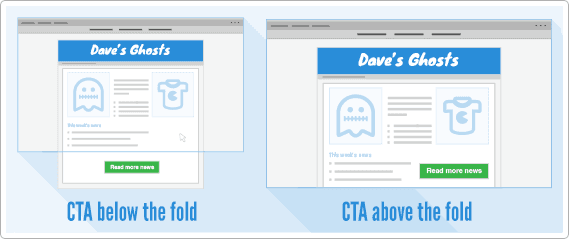 Campaign Master
Above the fold content refers to everything that’s seen when the email first loads.
In other words, don’t make your readers scroll for discounts. Give them the best value at the top of your message.
If your goal is to convert, put your call-to-action at the top. Otherwise, you can use high-quality images or videos to hook your audience and keep them reading.
Campaign Master
Above the fold content refers to everything that’s seen when the email first loads.
In other words, don’t make your readers scroll for discounts. Give them the best value at the top of your message.
If your goal is to convert, put your call-to-action at the top. Otherwise, you can use high-quality images or videos to hook your audience and keep them reading.
5. Use Autoresponders
Email marketers often use autoresponders to automate their transactional emails, and with good reason. Transactional emails have an average open rate of 50%, whereas newsletter open rates hover around 20%. Unlike email newsletters, transactional emails are sent from your business to a single recipient. Examples include order notifications, abandoned cart emails, password reminders, and personalized product notifications. While sending one-on-one emails manually isn’t a viable option for most businesses, setting up autoresponders allows you to send personalized transactional emails using behavioral triggers. Autoresponders help you build trust with customers and take your personalization to the next level. Connect your email marketing tool to CoSchedule so you can easily schedule your automated emails and gain visibility on your entire email strategy.
Connect your email marketing tool to CoSchedule so you can easily schedule your automated emails and gain visibility on your entire email strategy.


